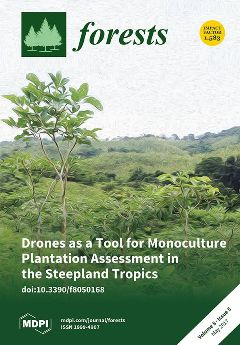Global climate change represents a moving target for plant acclimation and/or adaptation, especially in the Mediterranean basin. In this study, the interactions of severe drought (20% of the effective daily evapotranspiration) and O
3 fumigation (80 ppb, 5 h day
−1, for
[...] Read more.
Global climate change represents a moving target for plant acclimation and/or adaptation, especially in the Mediterranean basin. In this study, the interactions of severe drought (20% of the effective daily evapotranspiration) and O
3 fumigation (80 ppb, 5 h day
−1, for 28 consecutive days) on (i) photosynthetic performance, (ii) cell membrane stability, (iii) hydric relations, (iv) accumulation of compatible solutes, and (v) lipophilic antioxidant compounds were investigated in young
Quercus cerris plants. In addition to the typical drought-induced stomatal closure, imposition of water withholding dramatically influenced the profile of stress-associated metabolites, i.e., abscisic acid (ABA), proline, and lipophilic antioxidants. However, plants were not able to delay or prevent the negative effects of water deficit, the greatest impacting factor in this study. This translated into a steep decline of photosynthetic efficiency, leaf hydration, and membrane fluidity and permeability. When water stress was coupled with O
3, plants orchestrated cross-talk among ABA, proline, and sugar in fully-expanded mature leaves, partially leading to a premature senescence.
Full article





